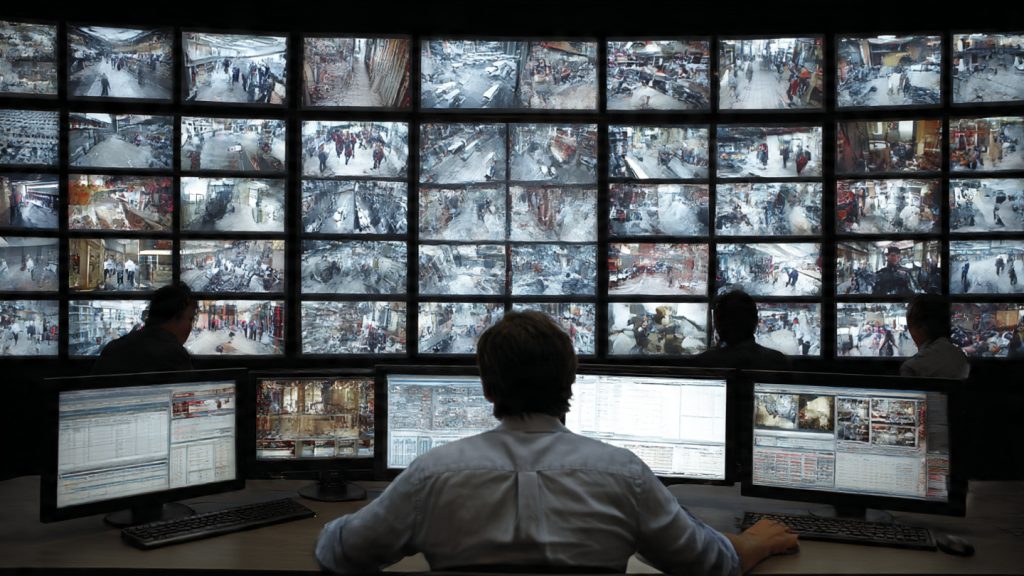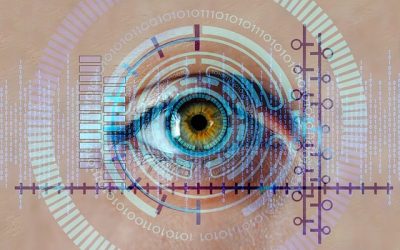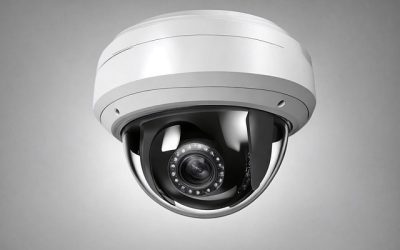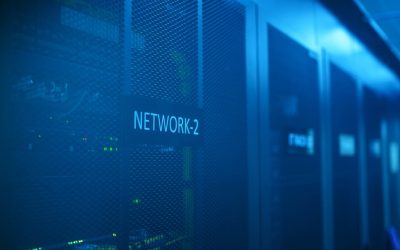Is Your CCTV System’s Network Secure from Cyber Threats?
In today’s digital age, the significance of cyber security cannot be overstated, especially when it comes to Closed-Circuit Television (CCTV) systems. These systems are not merely tools for surveillance; they are integral components of a comprehensive security strategy that protects both physical assets and sensitive information. As technology advances, so do the methods employed by cybercriminals, making it imperative for organizations to prioritize the security of their CCTV networks.
A breach in these systems can lead to unauthorized access to live feeds, recorded footage, and even control over the cameras themselves, posing a significant risk to privacy and safety. Moreover, the implications of a compromised CCTV system extend beyond immediate security concerns. Organizations can face legal repercussions, financial losses, and damage to their reputation if sensitive data is exposed or misused.
The integration of CCTV systems with other networked devices further complicates the landscape, as vulnerabilities in one area can lead to cascading failures across the entire network. Therefore, understanding the importance of cyber security for CCTV systems is not just about protecting video feeds; it is about safeguarding an organization’s integrity and trustworthiness in an increasingly interconnected world. Peace of mind is our priority when it comes to your security needs.
Identifying Potential Cyber Threats to Your CCTV Network
To effectively secure a CCTV network, it is crucial to identify the potential cyber threats that could compromise its integrity. One of the most common threats is unauthorized access, where hackers exploit weak passwords or unpatched vulnerabilities to gain control over the system. Once inside, they can manipulate camera settings, disable recording functions, or even use the cameras for illicit surveillance.
This type of intrusion can have devastating consequences, particularly in sensitive environments such as banks, hospitals, or government facilities. Another significant threat comes from malware and ransomware attacks. Cybercriminals often deploy malicious software that can infiltrate CCTV systems, encrypting data and demanding a ransom for its release.
This not only disrupts operations but can also lead to permanent loss of critical footage. Additionally, Distributed Denial of Service (DDoS) attacks pose a risk by overwhelming the network with traffic, rendering the CCTV system inoperable. By understanding these potential threats, organizations can take proactive measures to fortify their CCTV networks against cyber attacks.
Assessing Vulnerabilities in Your CCTV System’s Network
Once potential threats have been identified, the next step is to assess vulnerabilities within the CCTV system’s network. This involves conducting a thorough evaluation of both hardware and software components to pinpoint weaknesses that could be exploited by cybercriminals. Common vulnerabilities include outdated firmware, default passwords, and unsecured network configurations.
For instance, many users neglect to change factory-set passwords, leaving their systems open to easy access by hackers. Additionally, the physical security of CCTV devices should not be overlooked. Cameras installed in easily accessible locations can be tampered with or stolen, compromising the entire surveillance system.
Conducting regular vulnerability assessments allows organizations to stay ahead of potential threats by identifying and addressing weaknesses before they can be exploited. This proactive approach is essential for maintaining a robust security posture in an ever-evolving cyber landscape.
Implementing Best Practices for Securing Your CCTV Network
Implementing best practices for securing a CCTV network is vital for mitigating risks and enhancing overall security. One fundamental practice is to change default passwords and create strong, unique passwords for each device on the network. Passwords should be complex, incorporating a mix of letters, numbers, and special characters to make them difficult to guess.
Additionally, enabling two-factor authentication adds an extra layer of security by requiring users to verify their identity through a secondary method. Another best practice involves segmenting the CCTV network from other networks within the organization. By creating a separate network for CCTV systems, organizations can limit access and reduce the risk of cross-contamination from other devices that may be less secure.
Regularly reviewing user access rights is also essential; only authorized personnel should have access to the CCTV system, and permissions should be adjusted as roles change within the organization. By adhering to these best practices, organizations can significantly enhance the security of their CCTV networks.
Utilizing Encryption and Authentication for CCTV Data
Encryption and authentication are critical components in securing data transmitted by CCTV systems. Encryption involves converting data into a coded format that can only be accessed by authorized users with the correct decryption key. This ensures that even if data is intercepted during transmission, it remains unreadable to unauthorized parties.
Implementing encryption protocols such as Secure Sockets Layer (SSL) or Transport Layer Security (TLS) can help protect video feeds and recorded footage from eavesdropping. Authentication mechanisms are equally important in ensuring that only legitimate users can access the CCTV system. This can include methods such as username and password combinations, biometric verification, or smart cards.
By employing robust authentication measures, organizations can prevent unauthorized access and ensure that only trusted individuals have control over their surveillance systems. Together, encryption and authentication form a powerful defense against cyber threats targeting CCTV networks.
Ensuring Regular Software Updates and Patches for CCTV Devices

Keeping software up-to-date is one of the simplest yet most effective ways to enhance the security of CCTV systems. Manufacturers frequently release updates and patches to address known vulnerabilities and improve functionality. Failing to apply these updates can leave systems exposed to cyber threats that exploit outdated software.
Organizations should establish a routine schedule for checking and applying updates to all CCTV devices, including cameras, recorders, and associated software. In addition to regular updates, organizations should also monitor vendor announcements for critical patches that may need immediate attention. Cybercriminals often target known vulnerabilities shortly after they are disclosed; therefore, timely application of patches is essential for maintaining a secure environment.
By prioritizing software updates and patches, organizations can significantly reduce their risk of falling victim to cyber attacks targeting their CCTV networks.
Monitoring and Managing Access to Your CCTV System
Effective monitoring and management of access to CCTV systems are crucial for maintaining security integrity. Organizations should implement strict access controls that define who can view live feeds or recorded footage and what actions they are permitted to take within the system. This includes establishing user roles with varying levels of permissions based on job responsibilities.
For example, security personnel may require full access while administrative staff may only need limited viewing capabilities. Regular audits of user access logs can help identify any suspicious activity or unauthorized attempts to access the system. Organizations should also consider implementing real-time alerts that notify administrators of any unusual access patterns or failed login attempts.
By actively monitoring and managing access to CCTV systems, organizations can quickly respond to potential threats and ensure that only authorized personnel have control over sensitive surveillance data.
Educating Employees on Cyber Security Awareness for CCTV Networks

Employee education plays a pivotal role in enhancing cyber security for CCTV networks. Even with advanced technology in place, human error remains one of the most significant vulnerabilities in any security system. Organizations should invest in comprehensive training programs that educate employees about best practices for cyber security specific to CCTV systems.
This includes recognizing phishing attempts, understanding password management techniques, and knowing how to report suspicious activity. Regular training sessions should be conducted to keep employees informed about emerging threats and evolving security protocols. Additionally, fostering a culture of security awareness encourages employees to take ownership of their role in protecting organizational assets.
By empowering staff with knowledge and resources, organizations can create a more resilient defense against cyber threats targeting their CCTV networks.
Integrating Firewalls and Intrusion Detection Systems for CCTV Protection
Integrating firewalls and intrusion detection systems (IDS) into the security framework of CCTV networks provides an additional layer of protection against cyber threats. Firewalls act as barriers between trusted internal networks and untrusted external networks, filtering incoming and outgoing traffic based on predetermined security rules. By configuring firewalls specifically for CCTV traffic, organizations can block unauthorized access attempts while allowing legitimate communication.
Intrusion detection systems complement firewalls by monitoring network traffic for suspicious activity or known attack patterns. When an intrusion is detected, IDS can alert administrators in real-time, enabling them to take immediate action to mitigate potential threats. Together, firewalls and IDS create a robust defense mechanism that enhances the overall security posture of CCTV networks.
Developing a Response Plan for Cyber Security Incidents in Your CCTV Network
Despite best efforts at prevention, it is essential for organizations to develop a response plan for cyber security incidents affecting their CCTV networks. This plan should outline clear procedures for identifying, containing, and mitigating incidents while minimizing disruption to operations. Key components of an effective response plan include establishing an incident response team composed of IT professionals and security personnel who are trained to handle cyber incidents.
Additionally, organizations should conduct regular drills to test their response plan’s effectiveness and ensure all team members understand their roles during an incident. Post-incident reviews are also crucial; analyzing what went wrong and how it was handled can provide valuable insights for improving future responses and strengthening overall security measures. By having a well-defined response plan in place, organizations can respond swiftly and effectively to cyber security incidents involving their CCTV networks.
Seeking Professional Assistance for Evaluating and Enhancing CCTV Network Security
As cyber threats continue to evolve in complexity and sophistication, seeking professional assistance for evaluating and enhancing CCTV network security becomes increasingly important. Cybersecurity experts possess specialized knowledge and experience that can help organizations identify vulnerabilities they may have overlooked and implement tailored solutions to address them effectively. Engaging with professionals allows organizations to benefit from comprehensive assessments that encompass all aspects of their CCTV systems—from hardware configurations to software protocols—ensuring a holistic approach to security enhancement.
Furthermore, ongoing support from cybersecurity specialists can provide organizations with peace of mind knowing they have access to expert guidance as they navigate the ever-changing landscape of cyber threats targeting their surveillance systems. In conclusion, securing CCTV networks against cyber threats requires a multifaceted approach that encompasses understanding potential risks, implementing best practices, utilizing advanced technologies like encryption and firewalls, educating employees on awareness, developing response plans, and seeking professional assistance when necessary. By prioritizing these strategies, organizations can significantly enhance their surveillance systems’ resilience against cyber attacks while safeguarding their assets and maintaining trust with stakeholders.
In addition to ensuring that your CCTV system’s network is secure from cyber threats, it’s crucial to understand the broader context of business security. A related article, Is Your Business Vulnerable? Common Mistakes in Business Security Systems, highlights frequent pitfalls that businesses encounter in their security measures. By addressing these common mistakes, you can further enhance the overall security posture of your organization.
FAQs
What are common cyber threats to CCTV systems?
Common cyber threats to CCTV systems include unauthorized access, hacking, malware infections, ransomware attacks, and data interception. These threats can compromise the security and privacy of the surveillance footage.
How can hackers gain access to a CCTV system?
Hackers can gain access through weak or default passwords, unsecured network connections, outdated firmware, or vulnerabilities in the system’s software. Exploiting these weaknesses allows them to control or monitor the CCTV system remotely.
Why is it important to secure the network of a CCTV system?
Securing the network prevents unauthorized access, protects sensitive video data, ensures the integrity of surveillance footage, and helps maintain the overall security of the premises being monitored.
What steps can be taken to secure a CCTV system’s network?
Steps include changing default passwords, using strong and unique passwords, regularly updating firmware and software, enabling encryption, segmenting the network, disabling unnecessary services, and monitoring network activity for suspicious behavior.
Can outdated firmware affect the security of a CCTV system?
Yes, outdated firmware can contain security vulnerabilities that hackers can exploit. Regular updates often include patches for known security issues, making it essential to keep the system up to date.
Is it safe to access CCTV footage remotely?
Remote access can be safe if proper security measures are in place, such as using secure VPN connections, strong authentication methods, and encrypted communication channels. Without these, remote access can expose the system to cyber threats.
What role does encryption play in securing CCTV systems?
Encryption protects the data transmitted between cameras and recording devices or monitoring stations, preventing interception and unauthorized viewing of the footage.
How often should CCTV system security be reviewed?
Security should be reviewed regularly, at least quarterly, or whenever there are changes to the network or system configuration, to ensure ongoing protection against emerging threats.
Are cloud-based CCTV systems more vulnerable to cyber threats?
Cloud-based systems can be vulnerable if not properly secured, but they often benefit from professional security management. It is important to use reputable providers and implement strong security practices to mitigate risks.
What should I do if I suspect my CCTV system has been hacked?
If a breach is suspected, immediately disconnect the system from the network, change all passwords, update firmware, review access logs, and consult cybersecurity professionals to assess and remediate the issue.










